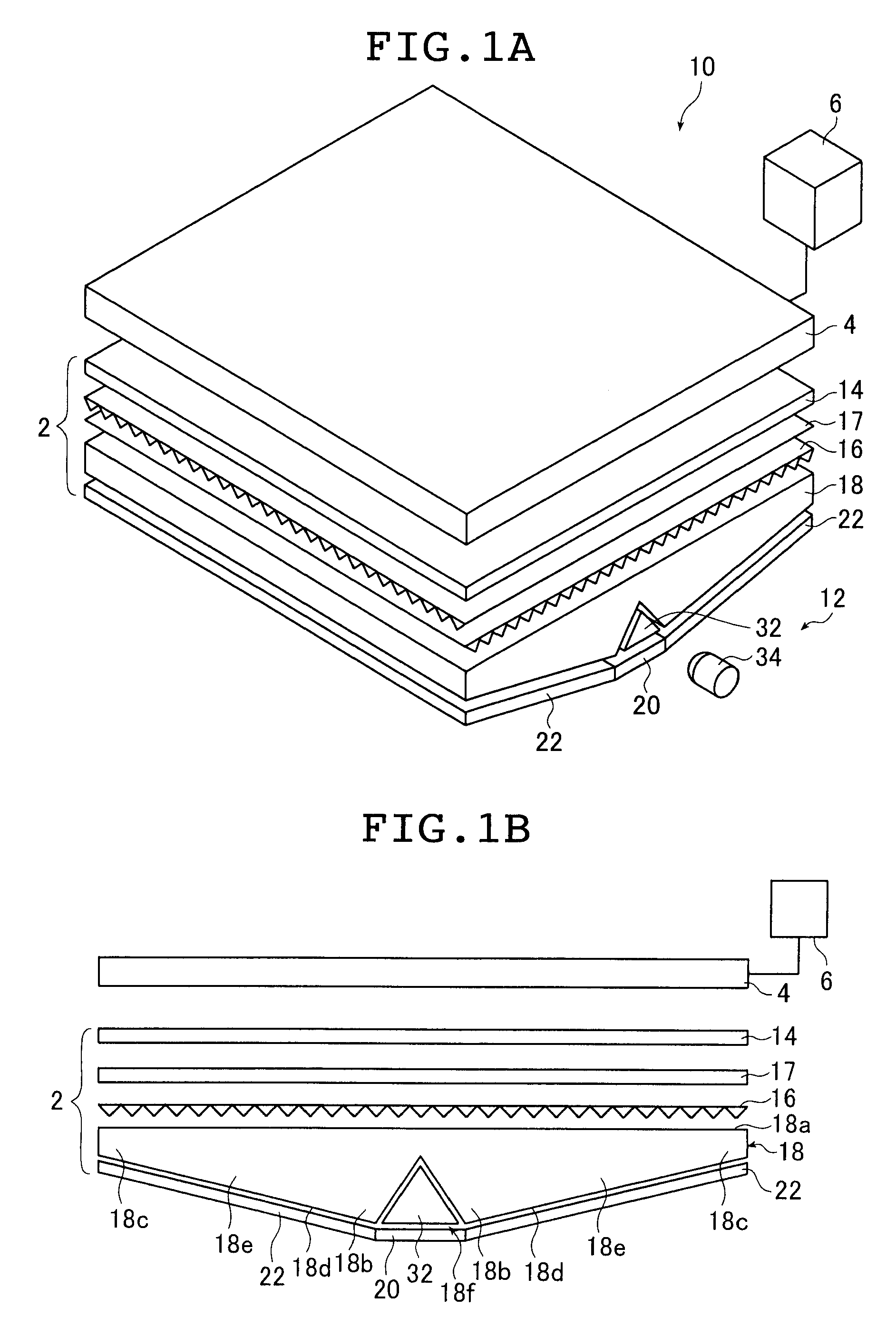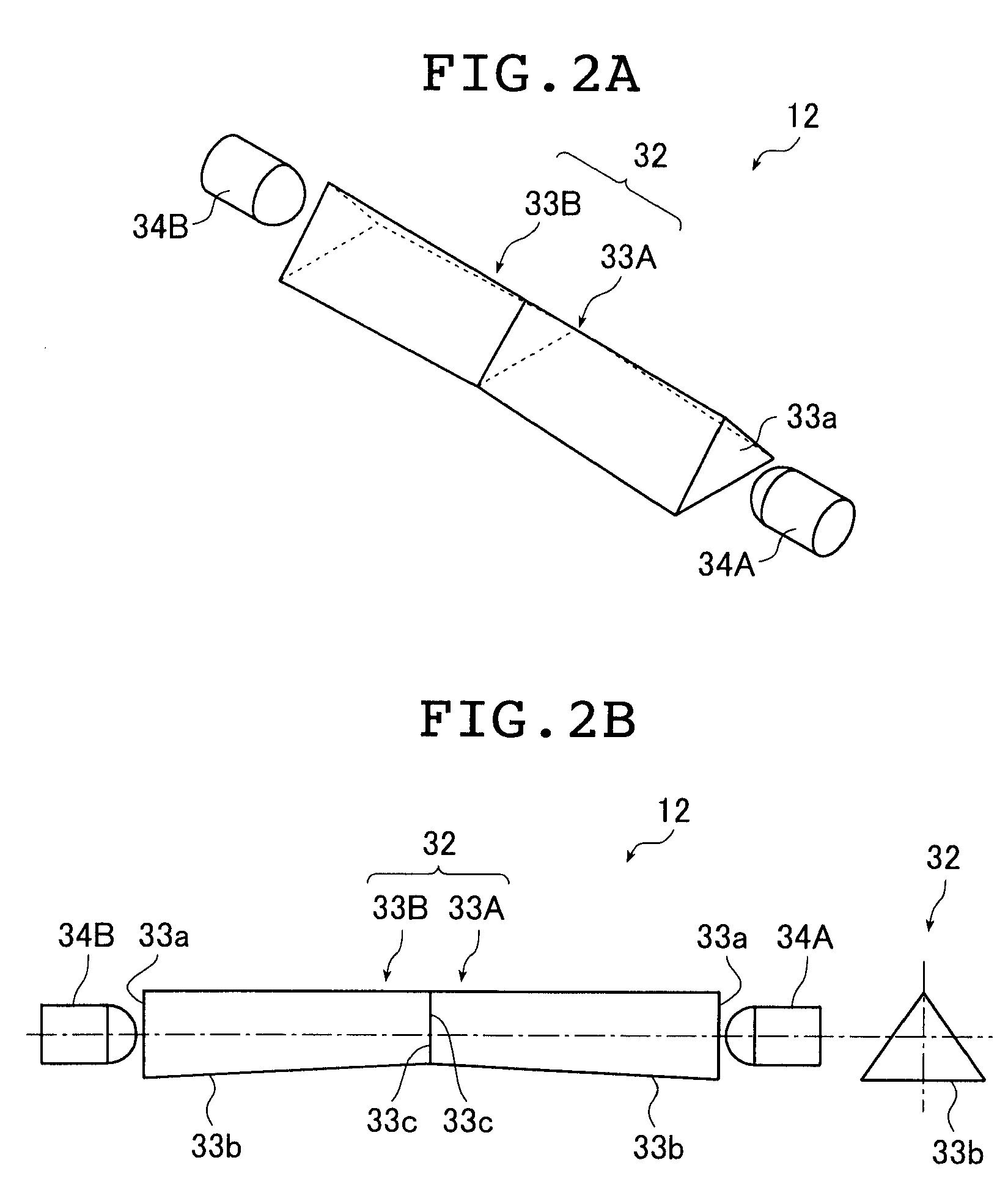Light Guide Member, Planar Lighting Device Using the Same, and Rod-Type Lighting Device
- Summary
- Abstract
- Description
- Claims
- Application Information
AI Technical Summary
Benefits of technology
Problems solved by technology
Method used
Image
Examples
first embodiment
[0129]FIG. 1A is a schematic perspective view of a liquid crystal display device using the inventive planar lighting device (also referred to as “backlight unit” below).
[0130]A liquid crystal display device 10 basically comprises a planar lighting device 2, a liquid crystal display panel 4 disposed on the light emission side of the planar light device 2, and a drive unit 6 for driving them.
[0131]The liquid crystal display panel 4 displays characters, figures, images, etc., on the liquid crystal display panel by using the changes in refractive index caused in the liquid crystal cells as electric field is partially applied to liquid crystal molecules arranged beforehand in a given direction to change the orientation of the molecules.
[0132]The planar lighting device 2 is a device to irradiate the entire surface of the liquid crystal display panel 4 with a uniform light from behind the liquid crystal display panel 4 and has a light emitting plane with substantially same dimensions as an...
second embodiment
[0300]In the second embodiment, the LEDs 34A and 34B are placed each in one location (not shown) and light emitted from the LEDs 34A and 34B is led to the end surfaces of the light guide units 32 through optical fibers as illustrated in FIG. 25.
[0301]A planar lighting device of a type that admits light via optical fibers and through both end surfaces of the rod-type light guide units will be described referring to FIGS. 25 to 30, whereas a planar lighting device of a type that admits light via optical fibers and through one of the end surfaces of the rod-type light guide units will be described referring to FIGS. 31 to 34.
[0302]FIG. 25 schematically illustrates how light from the LEDs is led via optical fibers to the juxtaposed light guide plates. FIG. 26A is a schematic cross-sectional view of the light guide plate 18 forming a planar lighting device having light guide units disposed on the wall surfaces defining the parallel groove of the light guide plate; FIG. 26B is a schematic...
third embodiment
[0328]Now, a third embodiment of the present invention will be described referring to FIGS. 35 to 39. The third embodiment of the planar lighting device is configured by connecting light guide plates each having a wedge-like sectional shape such that end surfaces of the light guide plates are in close contact with each other. The planar lighting device having such a configuration will be referred to as a tandem-type planar lighting device below.
[0329]FIG. 35 is a schematic perspective view of a liquid crystal display device in which juxtaposed light guide plates are used in a tandem-type planar lighting device.
[0330]FIG. 36 illustrates an example of a tandem-type planar lighting device that admits light through both end surfaces of light guide units. FIGS. 36A, 36B and 36C are, respectively, a schematic cross-sectional view of light guide plates of a tandem-type planar lighting device comprising the inventive rod-type lighting devices, a partial, enlarged cross-sectional view thereo...
PUM
 Login to View More
Login to View More Abstract
Description
Claims
Application Information
 Login to View More
Login to View More - R&D
- Intellectual Property
- Life Sciences
- Materials
- Tech Scout
- Unparalleled Data Quality
- Higher Quality Content
- 60% Fewer Hallucinations
Browse by: Latest US Patents, China's latest patents, Technical Efficacy Thesaurus, Application Domain, Technology Topic, Popular Technical Reports.
© 2025 PatSnap. All rights reserved.Legal|Privacy policy|Modern Slavery Act Transparency Statement|Sitemap|About US| Contact US: help@patsnap.com



